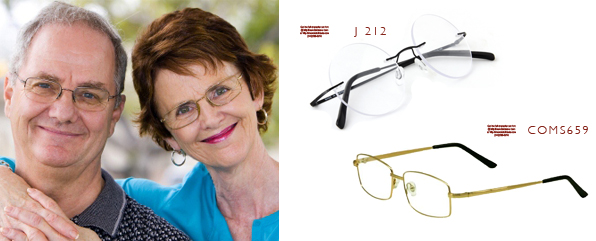With the rapid development of technology, progressive eyeglass lenses are no longer a novelty. Nowadays, more and more people are switching to this unique type of eyeglasses due to the exceptional convenience they provide. Some who begin to find themselves troubled with more than one vision errors directly put on progressives instead of going through bifocals beforehand. While most people may know a thing or two about what are progressive lenses, rarely are they aware of the details. Likewise, most wearers know or are told at their optician’s that it takes an adjusting time to get used to their progressive lenses, rarely are they told how exactly should they behave during the period. In this article, we take up these two issues and try to give as detailed explanation as we can.
To answer the question of why we need progressive lenses, we need to look into the components of our eyes. For our eyes to focus at different ranges, the crystalline lenses in our eyeballs have to constantly change. It flattens to focus on near objects while bulges out a bit to see things far off. The elasticity of such lenses,however, is reduced alongside one’s aging process. As a result, a man who is over 40 often has a fossilized crystalline lens, not having enough capacity to focus at near range. If the 40 something happens to suffer from nearsightedness as well, his problem would be more than just a pair of single vision glasses, because he would have problem both focusing near and far. The traditional solution would be bifocals and trifocals, which with the visible lines on the lenses, are telltale signs of the wearers’ ages. Progressive eyeglasses lenses, on the other hand, don’t have such problem. Since the prescription powers gradually increase or decrease on such lenses, there are no visible lines as on bifocals or trifocals.
As to how to get used to your progressive glasses as quickly as possible, here are the advices given by professionals: first, start to wear progressive glasses as early as possible. Some people who switch from bifocals to progressives are finding it more difficult to adjust than those who have worn progressives right from the beginning. Second, when you intend to look at something, be sure to look at it through the middle of your lenses. Due to some reasons, the peripheral vision is often blurred. So, when you look at something, turn your head or your eyes at it. Thirdly, be ready to let it go when you find it takes forever to get used to them, for some people quite simply just never tolerate such lenses. They are called progressive non-tolerant. If you happen to be one of them, you should switch back to your old bifocals for the good of your precious eyes.
Firmoo Answers:
- Why i can't read with my progressive glasses?
- How to read with progressive glasses?
- What are side effects of using progressive lens glasses?
- What is the difference between single vision and progressive glasses?
- How to wear progressive lens glasses more comfortably?
- What are advantages and disadvantages of progressive glasses?
- How long does it take to get used to progressive eyeglasses?
- Why progressive lens glasses are so expensive?
- What are different types of progressive lens glasses?
- What are best lenses materials for progressive glasses?












